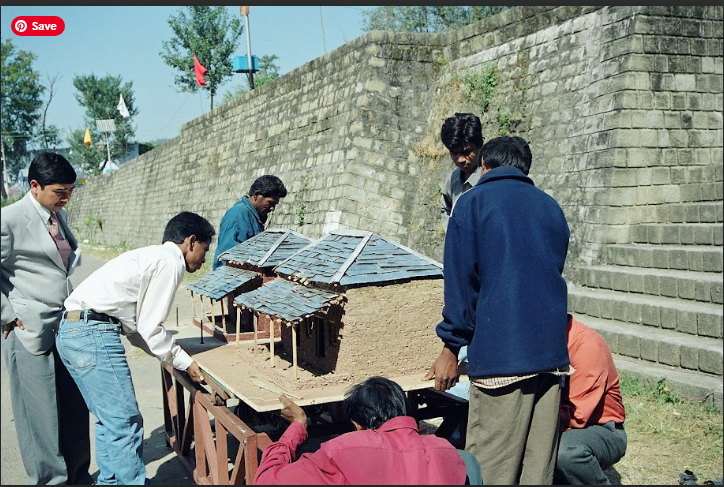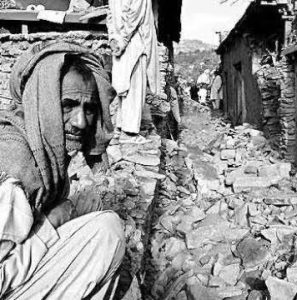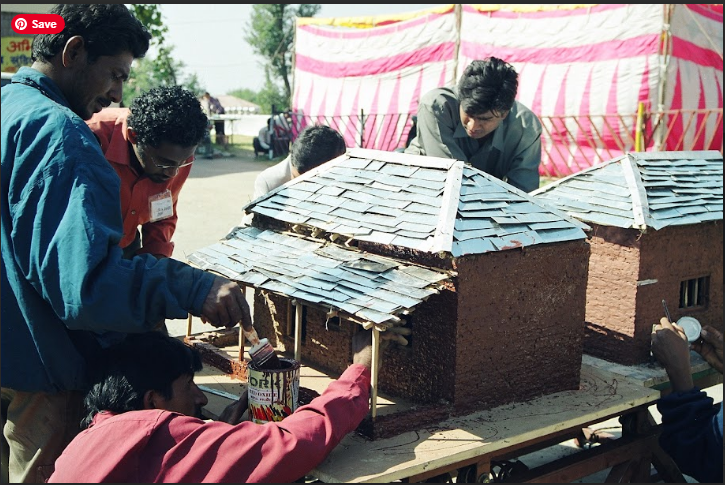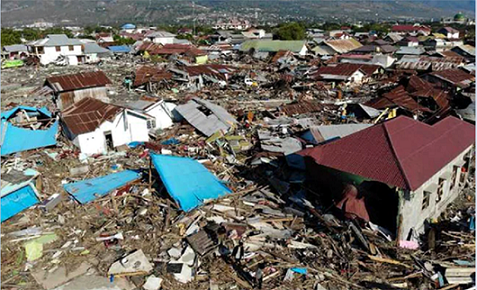WHY THE KANGRA EARTHQUAKE OF 1905 NEEDS TO BE KEPT IN PUBLIC MEMORY

-Uttarakhandhimalaya.in-
The Kangra earthquake of 1905 stands as one of the most devastating disasters in the history of India. Occurring in the Kangra Valley and the region of the Punjab Province (now part of Himachal Pradesh), this earthquake left a lasting impact on the region and its people. On April 4, 1905, a catastrophic earthquake with a magnitude of 7.8 struck the Kangra Valley. It caused widespread destruction, particularly in the towns of Kangra and Dharamsala. The death toll exceeded 20,000, making it one of the deadliest earthquakes in Indian history. The quake was so powerful that it was felt throughout Northern India, reaching as far as Delhi. Numerous buildings and historical monuments were destroyed, leaving a scar on the region’s cultural heritage.

As we remember the day it’s important to keep alive memories of how people survived and built back. These memories will help future generations too in coping with the future.
Geological Insights
Despite its immense power, the earthquake did not result in any observable surface rupture at the time, a rare occurrence for earthquakes of this magnitude. Later studies, however, identified the Kangra Valley Fault (KVF) as the likely culprit for the 1905 earthquake. This fault is a right-lateral strike-slip fault, capable of producing earthquakes with magnitudes greater than 7.2. Paleoseismic investigations along the KVF have revealed evidence of at least four significant seismic events in the region’s history, with the 1905 quake likely being the most recent. These findings highlight the complex and active seismic nature of the Himalayan region.
Impact
The Kangra earthquake had a devastating impact, reaching a peak Rossi–Forel intensity of X in Kangra. Remarkably, areas as far as 150 km away, including Dehradun and Saharanpur in the Indo-Gangetic Plain, experienced unusually high intensities. Even towns like Kasauli, Bilaspur, Chamba, and Lahore felt the quake at an intensity of VII. The disaster led to the demolition of approximately 100,000 buildings and resulted in the tragic loss of over 20,000 lives. Additionally, around 53,000 domestic animals perished. The earthquake also wreaked havoc on the region’s infrastructure, including the hillside aqueducts vital for water supply. Financially, the recovery from this calamity was immense, with costs estimated at 2.9 million rupees in 1905.

Resilience and Recovery
The aftermath of the earthquake saw a significant humanitarian response. Efforts were focused on providing immediate relief to the survivors, including medical care, food, and shelter. The rebuilding process was slow but steady, with a focus on constructing more earthquake-resistant buildings. The disaster also led to increased awareness and understanding of seismic risks in the region, prompting improvements in construction standards and disaster preparedness. This paved the way for the development and implementation of stricter building codes in earthquake-prone regions of India. The Kangra earthquake serves as a powerful reminder of the need for preparedness in earthquake-prone zones. Today, India has a well-established network of seismic monitoring stations and a robust disaster management system. Public awareness campaigns educate communities about earthquake safety measures and evacuation protocols.
Himachal Pradesh learnings from different disasters
Sustainable Environment and Ecological Development Society (SEEDS) has a long history of working in Himachal Pradesh and has supported the State not only by providing technical assistance but working with communities to empower them to rebuild and learn as they do so by retrofitting community buildings and spaces. From the Hill Safety Campaign to initiating the School Earthquake Safety Initiative, Shimla (SESIS) the Shimla district of Himachal Pradesh to enhance sensitivity towards earthquake risks in the region with the support of the Government of Himachal Pradesh and other stakeholders. The project inculcated a culture of safety through 20 schools. Structural strengthening (retrofitting) of schools was carried out in 5 selected schools. Efforts were taken to build the capacity of different stakeholders like masons, students, and teachers, to reduce the risks and to be able to face disasters in the future.
Very recently following the July and August 2023 heavy rainfall there were a series of landslides. Through rigorous ground assessments SEEDS identified 20 families for transitional shelters – on the basis of several prerequisite conditions. Many of these families had lost both their homes and their livelihoods.In consultation with the local Gram Pradhans and local communities a physical survey of the affected families was carried out and the most marginalised families from the villages were selected
SEEDS has been actively involved in various initiatives in and around Shimla to enhance safety and community engagement. Besides their work on reducing earthquake risks in Shimla, they organized a Parvat Yatra, a journey through the mountains, to connect with local communities. In Solan, another area prone to seismic activities, SEEDS built a community center. This center serves as a hub for local people to gather, learn, and participate in safety and preparedness activities. Moreover, SEEDS played a significant role in the recovery efforts following a major incident in 2005, demonstrating their commitment to both immediate response and long-term risk reduction. All these efforts highlight SEEDS’ dedication to building safer and more resilient communities in regions vulnerable to natural disasters.
Conclusion
The Kangra earthquake of 1905 serves as a poignant reminder of the destructive power of natural disasters and the resilience of the human spirit in the face of adversity. The lessons learned from this tragedy have informed better building practices and preparedness strategies, making the region stronger and more resilient in the face of future seismic challenges. Involving communities in the building back is most important.
(Note- This article is released by the SEEDS NGO for public awareness. Founded in 1994, SEEDS had one ultimate goal: building the resilience of people exposed to disasters and climate change impacts. For the last 27 years, we have been enabling this through practical solutions for disaster readiness, response, and rehabilitation. Our approach has involved grafting innovative technology onto traditional wisdom.-Usha Rawat, Admin, and the Chief Editor.)

